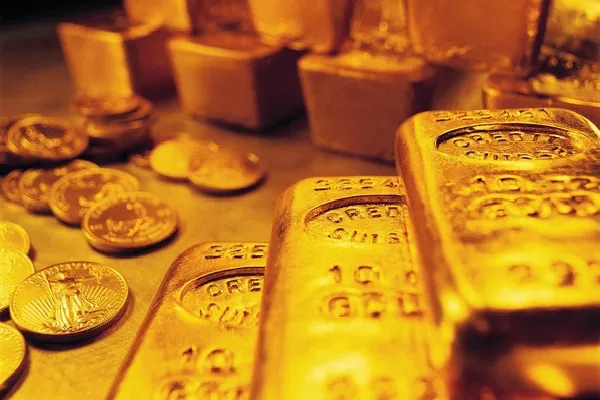Gold prices saw a significant surge on Wednesday, nearing a one-month high, driven by the potential escalation of the Israel-Hamas conflict, which heightened safe-haven demand. Additionally, copper prices also rose, following positive economic data from China.
The conflict escalated with a tragic blast at a Gaza hospital, reportedly resulting in the deaths of hundreds of Palestinians. This incident, combined with the cancellation of a summit between Egyptian and Palestinian leaders and U.S. President Joe Biden, raised concerns that the Israel-Hamas conflict might draw in other Arab countries, potentially spilling over into the broader Middle East region.
Investors reacted to these developments by increasing their demand for safe-haven assets, with gold receiving strong inflows. Gold’s most-active futures contract on New York’s Comex for December settled up $32.60, marking a 1.6% increase and reaching $1,968.30 per ounce. The spot price of gold, closely monitored by some traders, stood at $1,950.45, reflecting a gain of $27.29 or 1.4%. Both of these indicators were close to a one-month high.
Over the past week, rising concerns about an escalation in the Israel-Hamas conflict significantly boosted gold prices, as investors sought conventional safe havens. Gold had already gained 5% in the prior week. However, demand somewhat cooled in recent sessions, especially as renewed fears of higher U.S. interest rates emerged. The release of retail sales data raised concerns about persistent inflation, which could prompt a more hawkish stance from the Federal Reserve.
This week, all eyes are on a series of U.S. economic indicators and key Fed officials, notably Federal Reserve Chair Jerome Powell, who is set to address the situation on Thursday. Any hawkish signals from Powell, given the recent uptick in inflation, will be closely monitored.
Rising interest rates typically have a negative impact on gold prices, as they increase the opportunity cost of investing in the precious metal. This trend has weighed down on gold prices over the past year and is expected to limit substantial gains in gold, even as safe-haven demand increases.
In the realm of industrial metals, copper prices also rose sharply on Wednesday. This increase was driven by China, the world’s largest copper importer, reporting better-than-expected growth in the third quarter. Copper futures reached as high as $3.5883 per pound before settling at $3.5870, compared to the previous day’s close of $3.5870.
China’s third-quarter gross domestic product exceeded expectations with a growth rate of 4.9%, suggesting that recent stimulus measures from Beijing were yielding positive results. While the quarter-on-quarter growth remained below pre-COVID levels, the data, along with a positive reading on industrial production in September, raised hopes of improved economic conditions in China, further bolstering copper demand.
Attention is now focused on the upcoming loan prime rate decision from the People’s Bank of China on Friday, although the bank is widely anticipated to maintain current rates.


